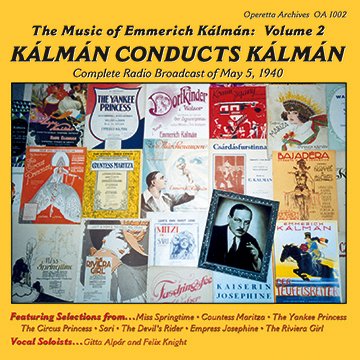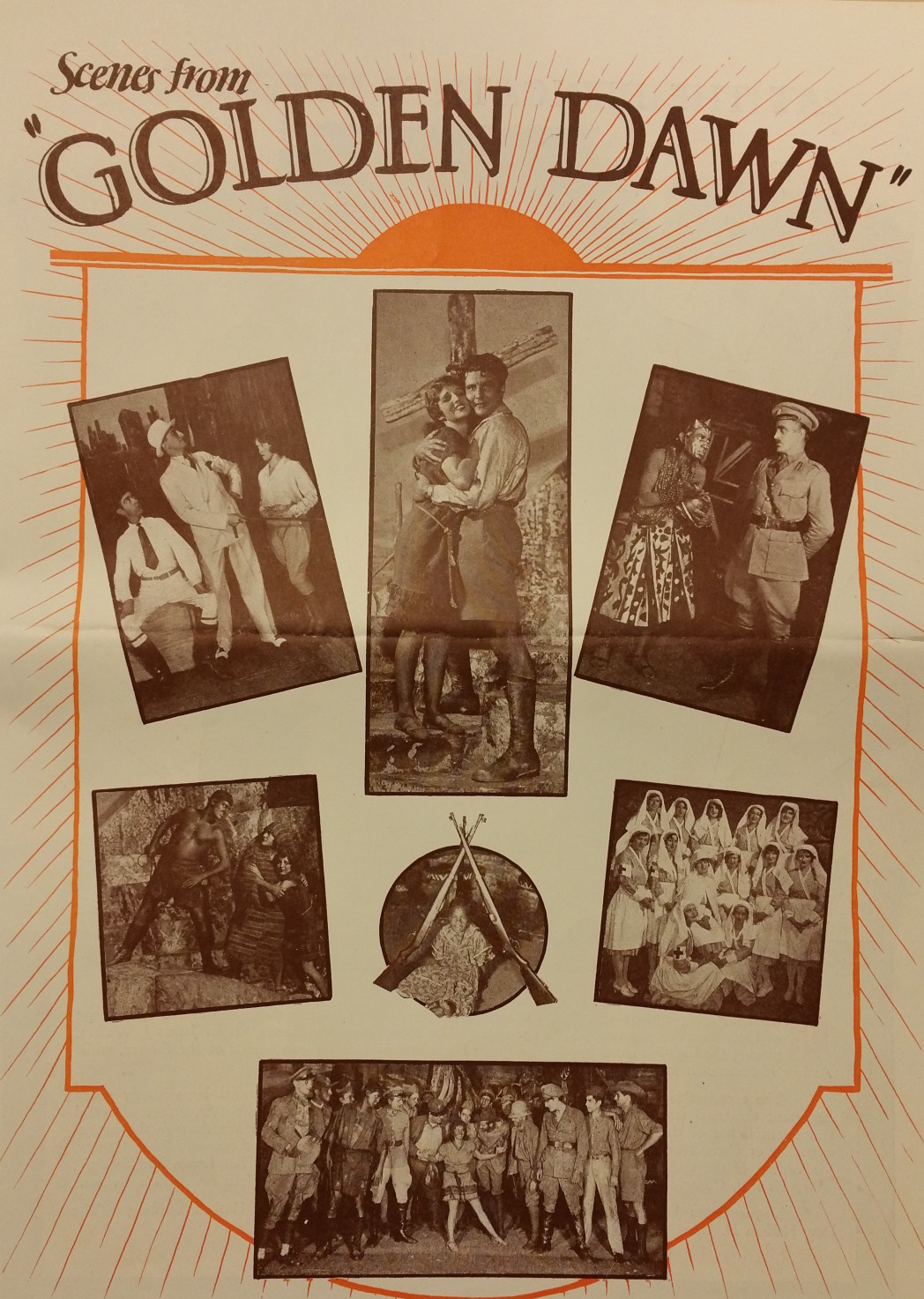John Groves
Operetta Research Center
14 December, 2018
Kálmán composed Kaiserin Josephine after his ‘regular’ first night theater, the Theater an der Wien, had gone bankrupt as a result of Nazi culture politics in Germany. Director Hubert Marischka couldn’t sell his hit shows to the German market anymore and had to leave Theater an der Wien, which came under a new management; the first ‘new’ hit there was Axel an der Himmelstür (1936) with Max Hansen and Zarah Leander, music by Ralph Benatzky. While arch enemy Franz Lehár had conquered the Staatsoper Wien in 1934 with Giuditta and Richard Tauber. It was obviously Kálmán’s goal to prove that he could do something like that, too. The Viennese were not interested to assist him in this endeavour, so Kálmán went to Switzerland and premiered his “Operette in 8 Bildern” at the fancy – though provincial – Zurich opera house. (Germany was off limits for Jewish born Kálmán.) Kaiserin Josephine was first performed on 18 January 1936. The libretto by Paul Knepler and Géza Herczeg is in a ‘historic’ style similar to that of Lehár’s shows for Richard Tauber. It’s also the style of various Jeanette MacDonald/Nelson Eddie movies, which Kálmán admired. In Kaiserin Josephine the authors tell the story of Napoleon’s love and eventual marriage (plus coronation) to a beautiful Creole widow, Josephine.

Joséphine de Beauharnais, painted by Guillaume Guillon-Lethière.
Because of the complicated political situation in Europe and the world the show never travelled. It was quickly forgotten. And Kálmán turned away from ‘historical’ operettas after writing Marinka for Broadway in 1945, re-focussing on up-to-date and more syncopated ideals with his Wild West show Arizona Lady, which premiered in 1954.
Kaiserin Josephine received a rare revival at the Léhar Festival in Bad Ischl in 2017 and cpo was there to capture the production in what appears to be a live recording – at least there are plenty of extraneous noises.
I find the music totally delightful – Kálmán, much of the time, at his most inspired. There are some gorgeous waltzes: a slow one for Josephine (No 11 “Schöne Marquise”), as well as a fox-trot (No 11 “Mein Traum”).

The cpo release of Kálmán’s “Kaiserin Josephine.”
Unfortunately, soprano Miriam Portmann is less than ideal casting in the title role: her voice sounds too mature for the part, with a harsh upper register and non-existent lower register. Or maybe this is the fault of the recording? In the dialogue, which someone presumably directed (?), she makes little or no attempt to characterise Josephine. It is difficult to believe she performed this role on stage!
She’s a far cry from anyone like Jeanette MacDonald, or even Gitta Alpar (who Kálmán chose to sing some of the Josephine music in New York in 1940, the track “You Are the One” is included on Kálmán Conducts Kálmán; Miss Alpar is partnered there by Felix Knight.)

“Kalman Conducts Kalman”: A CD version of his 1940 New York City concert.
Napoleon also has a waltz, which begins as a gavotte (No 4 “Liebe singt ihr Zauberlied”). Tenor Vincent Schirrmacher is no Tauber, but he the most successful of all the principals in essaying his part: he at least sounds romantic, has a pleasing, ringing top to his voice and attempts characterisation. His rendering of No 15, “Schön ist der Tag,” is one of the many musical highlights of this operetta, even if it, also, fails to sound in the slightest erotically perfumed.
The plethora of minor characters gets little to sing except for the many ensemble numbers. The exceptions are Josephine’s maid, Juliette, (Theresa Grabner) and Bernard (Roman Martin) who have a typical Kálmán ‘soubrette’ duet to sing, dance and reprise. It is difficult to comment on their performances as they can only be distantly heard on the recording!
For an operetta set in France, there is more than a touch of Hungarian and 1930s up-tempo Broadway flavour in the ensemble numbers such as the Tanzszene No 3. Josephine’ s song at the start of Scene 3 could have come straight from Csardasfürstin – perhaps she was intended to have Hungarian blood, or was it a number that Kálmán had written many years previously and just reused here? No matter – it’s actually rather a good piece!
Scene 5 contains a stately march which is followed by a totally delicious ballet (No 12) in waltz time, demonstrating that Kálmán had obviously registered Jerome Kern’s Showboat. (He had collaborated with Oscar Hammerstein II on Golden Dawn for Broadway in 1927, after the same time Hammerstein was busy writing Show Boat.) This ballet has one of those melodies which one can write down from dictation on first hearing and which one cannot get out of one’s mind!

Page from the original souvenir program of “Golden Dawn”. (Source: New York Public Library)
One of the many pleasures of this operetta is Kálmán’s scoring which seems much more inventive than usual – maybe because he was writing for an opera orchestra and wanted to put Léhar and Giuditta in their place. Or perhaps this is because of the recording which, to say the least, favours the excellent orchestra at the expense of the soloists and especially the chorus. Throughout, it is impossible to hear any of the words the chorus sings, though one is aware they are singing. It is as if the sound engineer thought he/she was just recording an orchestra (which is beautifully recorded) and had not been told there were singers.
I am impressed with Marius Burkett’s conducting – stylish and rhythmic, especially in his handling of the various waltzes – the exact opposite of John Owen Edwards in Novello’s The Dancing Years which Kevin Clarke reviewed recently.

Richard Tauber and composers Lehár and Kálmán.
As so often with cpo releases, the booklet is a great disappointment: the cover photo is uninviting, the synopsis much too brief to be of any use to anyone – even those fluent in German, and I could write another few thousand words on the inaccuracy of the “Thoughts on the Work” printed in both English and German – I read both in case the English version might be a mistranslation. It wasn’t!
In conclusion: wonderful music, excellent orchestra, stylish conducting, spoiled by some miscasting and poor recording of everything – apart from the orchestra!
I have still been listening to it at least once a day for the last two weeks: the music is just so vintage Kálmán!
PS: Kaiserin Josephine was recently also revived in concert at Baden bei Wien where Ischl intendant Michael Lackner has transferred to.

A most informative and enthusiastic review. Very helpful. Thanks.
Delighted to discover that a complete recording of this particular operetta is now available, and have lost no time in ordering it. For many years now, have enjoyed the excerpts from this operetta recorded by Olivera Miljakovic and Adolf Dallapozza, included in the set EMI released to mark Emmerich Kaman’s centenary, and hoped that one day it would be recorded complete.
Fritz Wunderlich’s recording of excerpts from this work are also well worth listening to.